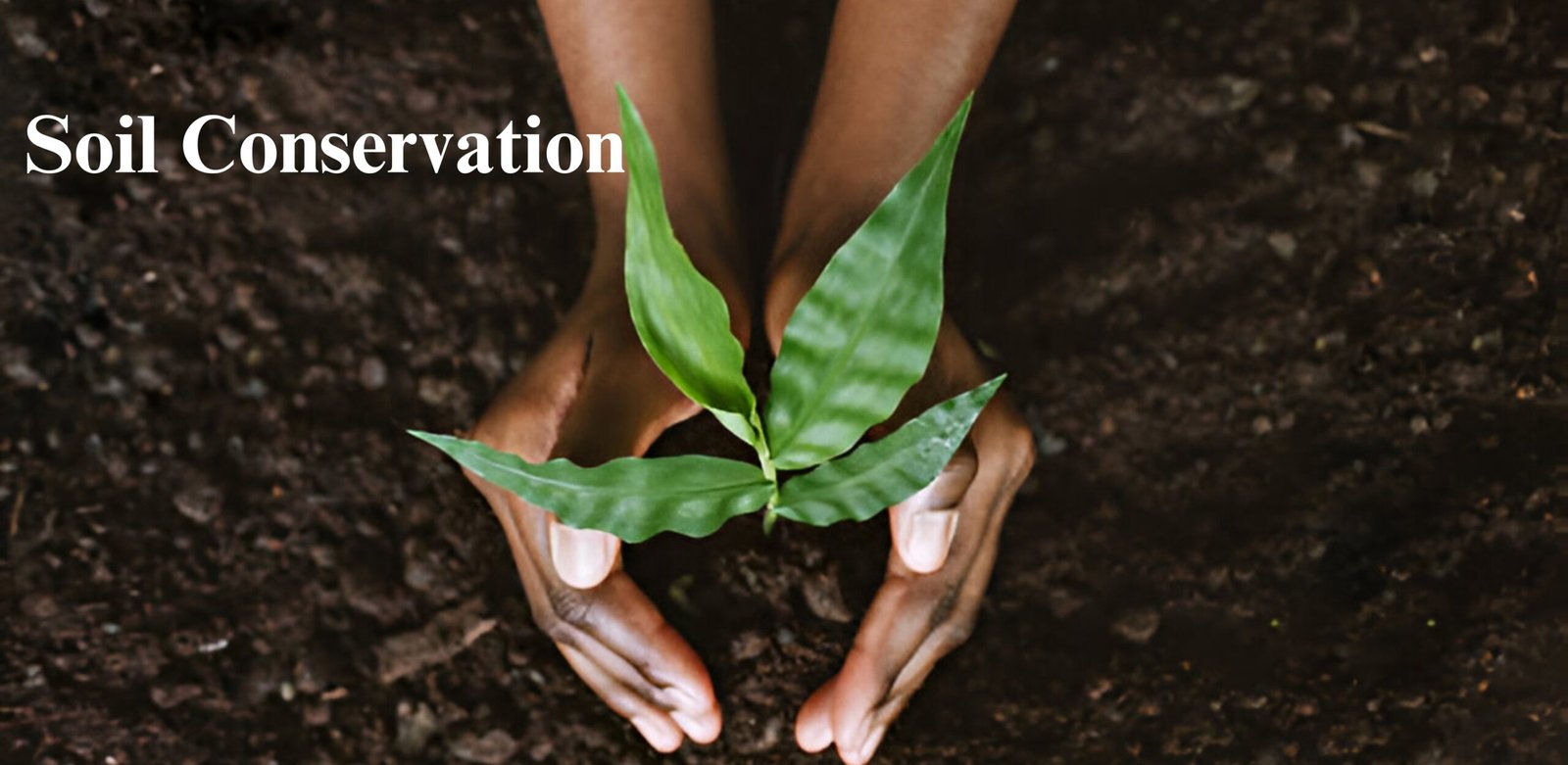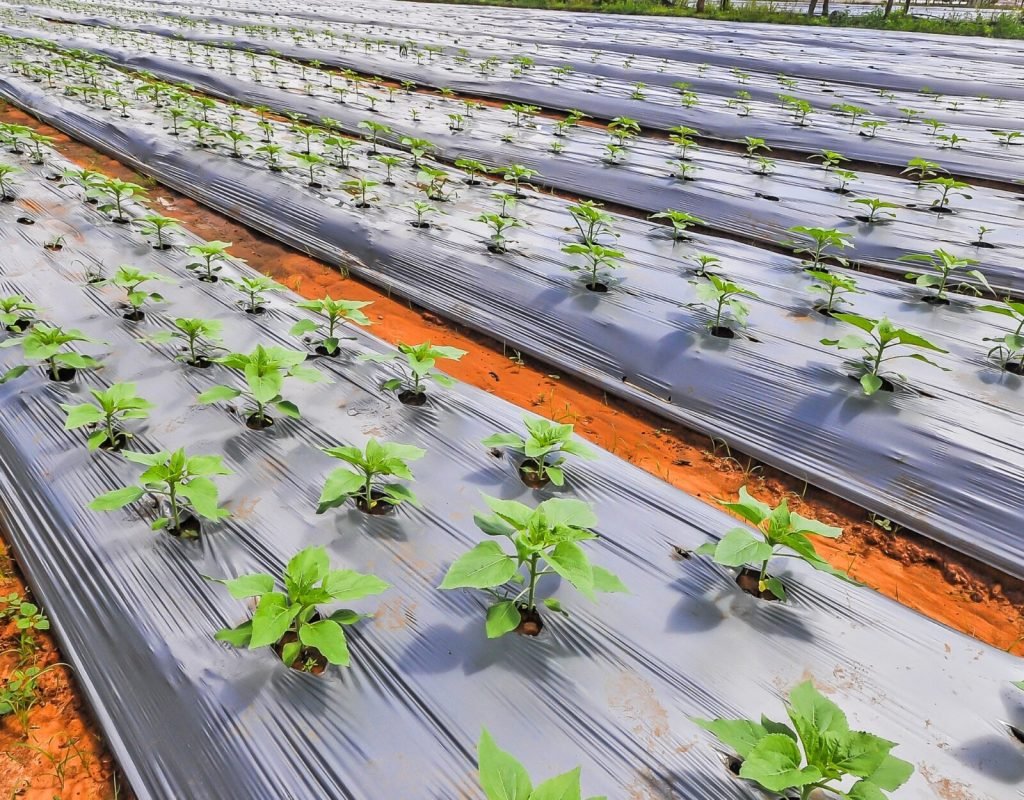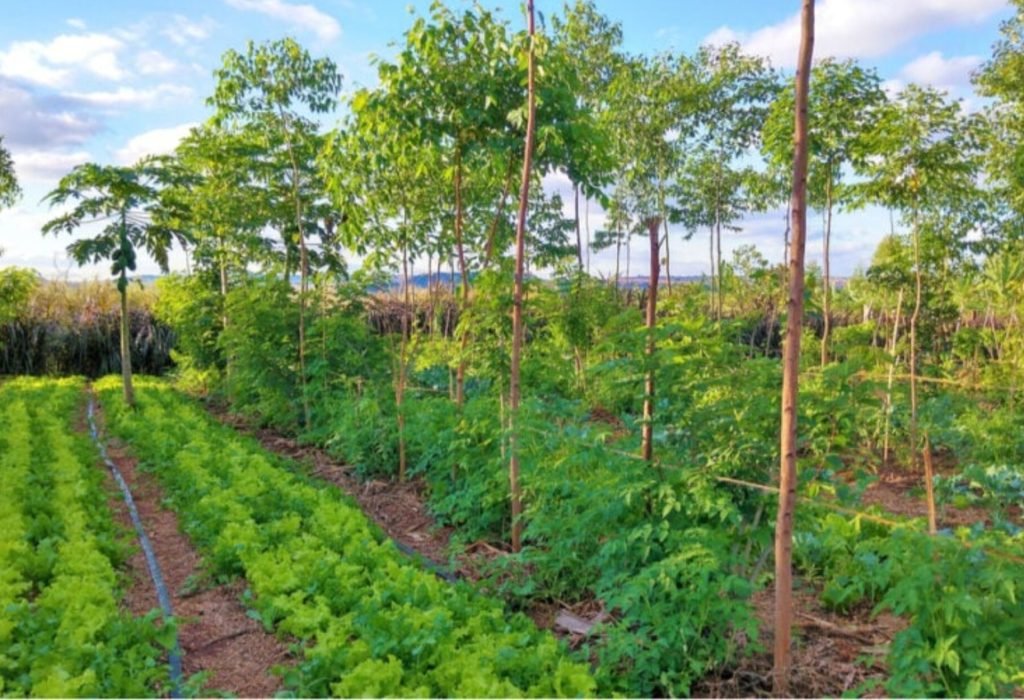SOIL CONSERVATION
What is Soil Conservation?
Soil conservation means taking care of the soil so it stays healthy and rich for growing crops. It includes simple steps that stop soil from washing or blowing away and help keep its nutrients safe. By protecting the soil, farmers can grow better crops and use the land for many years without losing its quality.
Importance of Soil Conservation
● Prevents Soil Erosion: It stops the top layer of soil from being washed or blown away by rain and wind, keeping the land fertile.
● Improves Water Quality: When soil stays in place, less dirt and chemicals flow into rivers and ponds, keeping water clean.
● Supports Good Crop Growth: Healthy soil gives plants the right nutrients and moisture they need to grow strong and give better yields.
● Fights Climate Change: Conserving soil helps store carbon and reduces harmful gases in the air, making farming more eco-friendly.
● Protects Food Security: By keeping the soil rich and productive, farmers can grow enough food for everyone now and in the future.

- 1. Contour Farming: Planting crops across slopes to reduce erosion.
- 2. Terracing: Creating flat or gently sloping plots of land to reduce erosion.
- 3. Crop Rotation: Rotating crops to improve soil fertility, structure, and biodiversity.
- 4. Cover Cropping: Planting crops between crop cycles to reduce erosion and improve soil health.
- 5. Mulching: Applying organic mulch to reduce erosion, retain moisture, and regulate soil temperature.
- 6. Afforestation/Reforestation: Planting trees to restore degraded forests, reduce erosion, and promote biodiversity.
- 7. Soil Testing and Analysis: Regularly testing and analyzing soil to determine its nutrient content, pH, and other characteristics.
- 1. Reduced Tillage or No-Till Farming: Minimizing soil disturbance to reduce erosion and promote soil health.
-
2. Integrated Pest Management (IPM): Using a holistic approach to manage pests, reduce chemical use, and promote soil health.
- 3. Organic Farming: Using natural methods to control pests, diseases, and weeds, and promote soil health.
- 4. Agroforestry: Integrating trees into agricultural landscapes to promote biodiversity, reduce erosion, and improve soil health.

Benefits of Soil Conservation
- 1. Improved Soil Health: Soil conservation practices can improve soil fertility, structure, and biodiversity.
- Increased Crop Yields: Soil conservation can lead to increased crop yields, improved crop quality, and reduced soil erosion.
- Reduced Soil Erosion: Soil conservation practices can reduce soil erosion, sedimentation, and runoff.
- Enhanced Biodiversity: Soil conservation can promote biodiversity, improve ecosystem services, and support ecosystem resilience.
Challenges to Soil Conservation
- Climate Change: Climate change can exacerbate soil erosion, reduce soil fertility, and alter soil moisture patterns.
- Land Degradation: Land degradation can lead to soil erosion, reduced soil fertility, and decreased biodiversity.
- Population Growth: Population growth can lead to increased pressure on land, soil degradation, and reduced soil fertility.
- Lack of Awareness: Limited awareness and understanding of soil conservation practices can hinder their adoption.

Future of Soil Conservation
Conservation agriculture practices, such as reduced tillage and cover cropping, can improve soil health and reduce erosion.
Integrating soil conservation into sustainable agriculture practices can promote ecosystem services, biodiversity, and ecosystem resilience.
New technologies, such as precision agriculture and drones, can improve soil conservation efforts by providing real-time data and monitoring capabilities.
International cooperation and policy support can help promote soil conservation efforts, share best practices, and provide resources for soil conservation initiatives.